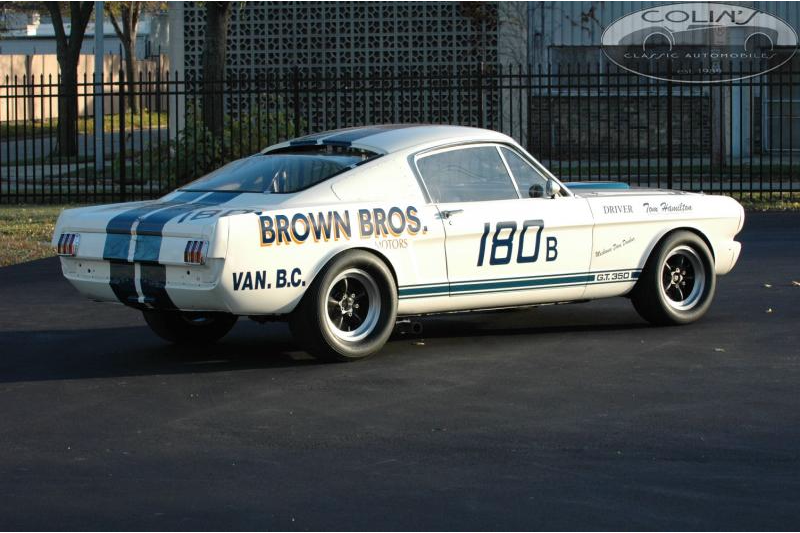Ford introduced the Mustang in 1964 to rave reviews. Not wanting the Mustang’s popularity to be a flash in the pan, Ford decided to the way to ensure longevity was to change the Mustang’s image from a “secretary’s car” to a bona fide performance car. To do that they turned to Carroll Shelby, who was experiencing unparalleled racing success with the Ford 289 in his Cobra.
How did Ford intend to prove to its buyers that the Mustang was a legitimate sports car? By winning races of course. But before that could happen, The Sports Car Club of America (SCCA) had a few requirements for Ford to meet. There had to be at least 100 street and competition versions produced; they had to be two-seaters; and the competition version could have a modified suspension or engine from the street version, but not both. As building a street car with a pumped up race motor didn’t make much sense, Shelby opted to develop the suspension and produce both street and competition versions with the same setup. A street car with competition suspension is much more manageable and desirable versus a street car with a race motor.
And so the Shelby GT-350 Competition Model, or “R Model” was born. Ford couldn’t have dreamed of a better outcome as the R Model dominated B/Production competition, proving to be nearly unbeatable in 1965, winning five out of six regional SCCA championships and the B/Production National Championship.
The R Model is the racing version of the G.T.350 and was only built 36 times in 1965.
The price for this master piece was 5995$. Pretty much compared to a regular Mustang
which started at about 2500$.
Only 1965 Mustang K Code Fastbacks were used and stripped down right at the factory and shipped to
Shelby American on Princeton Drive in Venice, CA. The LAX plant was opened several months later.
Here is a list of the differences between the Shelby street version “S” and the Shelby
race version “R”
01. No carpet
02. No headliner
03. No sound deadener
04. No heating system. Holes coverd with delete plates
05. No radio
06. Plexiglass rear window
07. Plexiglass side windows operated with a nylon strap in a light weight aluminium frame
08. No C-pillar vents. Hole covered with a aluminium plate. Mounted on the car with 22 rivets
09. No glove box door
10. CS 6 dial instruments: Water temp, oil temp, oil pressure, fuel pressure, tachometer, speedometer
11. Fire proof door panels
12. Fire extinguisher
13. Rollbar
14. A special racing seat could be ordered
14. No bumpers
15. Racing apron
16. Cooled brakes on front and back
17. No windshield wiper water reservoir
18. Steward-Warner 240 electric fuel pump
19. 36 gallon race tank. Two standard tanks welded together with a 3 inch LeMans gas cap
20. Bigger exhaust side pipes 2,5” instead of 2” of the street-version
21. 7x15 magnesium American Racing wheels
22. Goodyear Blue Steak tyres 6.00/9.30x15
23. Galaxy radiator
24. No cooling fan
25. Hayden engine oil cooler
26. Aviaid 6qt steel oil pan
27. The factory and preferred customers got the steel valve covers. The "regular" customers got the finned cast aluminium COBRA covers
28. Shelby modified and tested 289 V8 and track tested
|





|




